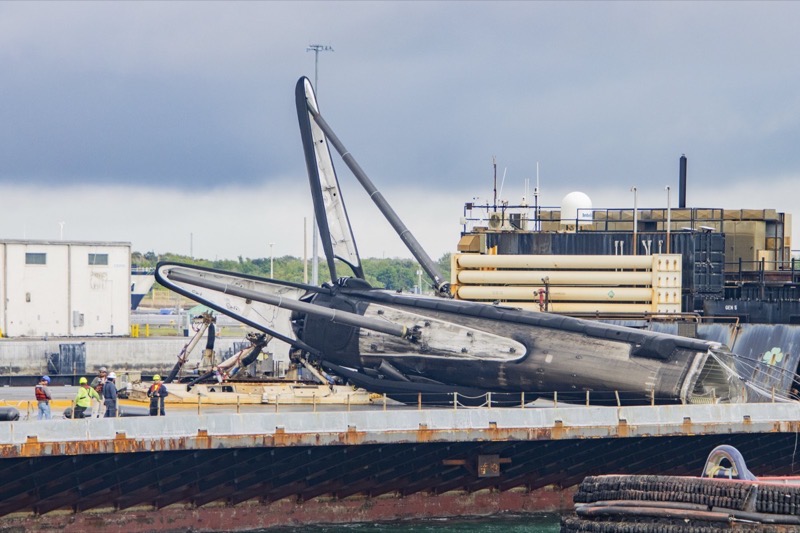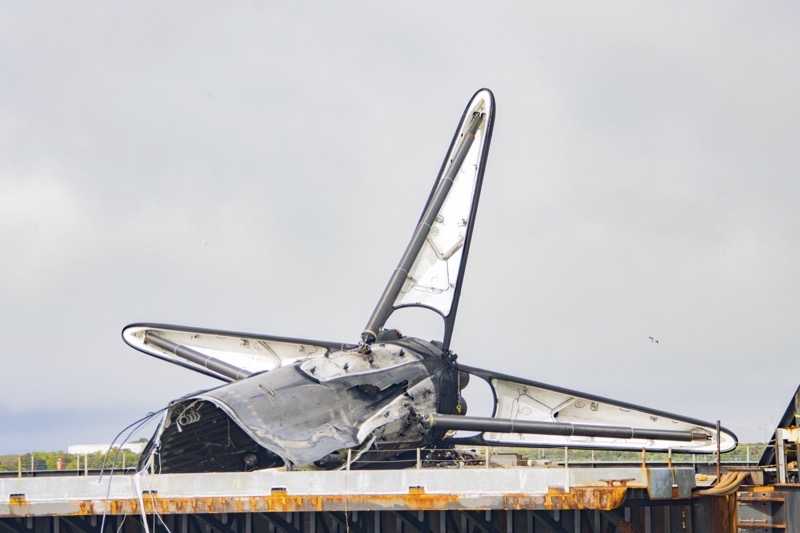
SpaceX’s Record-Setting Falcon 9 Booster Ends Career in Mishap

Spaceflight photographer and videographer Jenny Hautmann, also the content manager for SuperclusterHQ, reported a significant event in the history of space exploration.
SpaceX’s Falcon 9 booster B1058, after completing a record-breaking 19th mission on December 23, 2023, met an unexpected end when it tipped over on the droneship during its return to Port Canaveral. The incident was attributed to high winds and waves.

B1058 has been a notable figure in spaceflight history. It stood out as the only booster adorned with NASA’s logos, a distinction it earned from its maiden launch, Demo-2. This mission marked the first crewed orbital spaceflight launched from the United States since the conclusion of the Shuttle program. Furthermore, B1058 led the fleet in the number of re-flights it undertook.
On the early morning of Saturday, December 23, at 12:33 a.m. ET, this Falcon 9 booster embarked on its 19th mission, launching 23 Starlink satellites into low-Earth orbit. The launch took place from Space Launch Complex 40 (SLC-40) at Cape Canaveral Space Force Station in Florida. The first stage booster supporting this mission had a storied history, having previously launched Crew Demo-2, ANASIS-11, CRS-21, Transporter-1, Transporter-3, and 14 Starlink missions.

The toppling of B1058 marks a bittersweet end to its illustrious career, a booster that played a pivotal role in advancing space exploration and satellite deployment.
The images shared by Hautmann show one of the landing legs broken and also damaged engines, as the Falcon 9 rocket is laying on its side.
“During transport back to Port early this morning, the booster tipped over on the droneship due to high winds and waves. Newer Falcon boosters have upgraded landing legs with the capability to self-level and mitigate this type of issue,” said SpaceX on Christmas Day. Looks like SpaceX is again one step ahead of itself and is well prepared to prevent future boosters from falling over.

